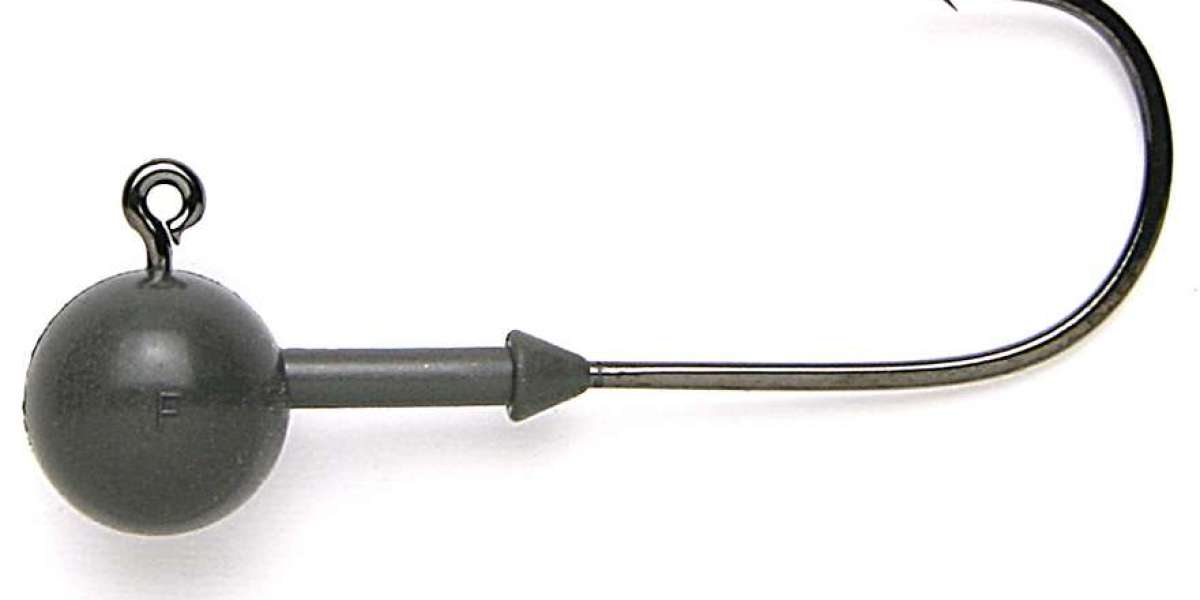Every successful fishing trip starts with the right gear, and one of the most essential tools in any angler’s tackle box is the Jig Head. This simple yet powerful piece of equipment has been a favourite among fishermen for decades. Known for its versatility, affordability, and effectiveness, a jig head can turn an average fishing day into an unforgettable one. Whether you’re targeting bass, walleye, or trout, learning how to use the right jig head can significantly boost your catch rate. In this article, we’ll explore what makes jig heads so useful, how to choose the right type for your fishing style, and the techniques that make them perform best.
What Is a Jig Head?
A Jig Head is a weighted hook designed to help your bait sink and move naturally through the water. It typically has a moulded head, often shaped like a ball, bullet, or fish, that adds weight and stability to the lure. The hook extends from the back of the head, allowing you to attach soft plastics, live bait, or artificial lures. This setup gives your bait a lifelike motion that attracts fish by imitating injured prey.
Jig heads come in different sizes, shapes, and weights, making them suitable for all fishing environments, from shallow ponds to deep lakes. The design ensures that your bait sinks quickly and stays at the desired depth, giving you better control over presentation and movement.
Why the Jig Head Is a Must-Have for Every Angler
The Jig Head is one of the most versatile fishing tools you can own. Unlike many specialised lures, it works in both freshwater and saltwater. You can use it for various fishing styles such as casting, trolling, or vertical jigging. Its design allows you to easily switch baits without changing the entire setup, making it incredibly convenient during long fishing sessions.
Because of its simplicity, beginners find jig heads easy to learn, while experienced anglers appreciate the precision they offer. The weight helps in long-distance casting, and the hook design ensures a solid strike when a fish bites. It’s a small tool that delivers big results, which is why no tackle box is complete without a few jig heads.
Types of Jig Heads and Their Uses
There are several types of jig heads, each designed for specific fishing conditions:
Round Head Jig
The most common type, ideal for beginners. It’s great for general fishing and works well with most soft plastic baits.
Football Head Jig
Perfect for rocky bottoms. Its shape prevents rolling and helps the bait stay upright.
Swimbait Jig Head
Designed for soft plastic swimbaits; great for catching bass and walleye.
Tube Jig Head
Used for inserting inside hollow-bodied baits like tubes. Excellent for finesse fishing.
Weedless Jig Head
Features a guard that prevents snagging in grassy or weedy areas.
Each type offers different benefits depending on where and how you fish. Having a variety of jig heads ensures you’re ready for any condition or species.
How to Choose the Right Jig Head Weight
The weight of your jig head is crucial for controlling how fast your bait sinks. Light jig heads (1/16 oz to 1/8 oz) are great for shallow waters and slower presentations. Heavier ones (1/2 oz or more) are ideal for deep waters or strong currents.
If you’re unsure which to choose, a medium-weight jig head (around 1/4 oz) is a good starting point. It provides enough weight to control the bait’s depth while maintaining a natural look in the water. Adjust based on wind, current, and target species.
Perfecting Your Technique with a Jig Head
Using a Jig Head effectively requires mastering a few techniques. The most common is the “lift and drop” method: cast your line, let the jig sink, then lift your rod tip slightly and let it fall again. This movement imitates a dying fish, which attracts predators.
You can also try a steady retrieve, dragging the jig slowly along the bottom, or hopping it gently over rocks and sand. Vary your rhythm and speed until you find what triggers bites. Patience and experimentation are key to mastering this versatile tool.
Pairing Jig Heads with the Right Baits
The success of your jig depends largely on the bait you use. Soft plastic lures like grubs, worms, or minnows are ideal because they move naturally and blend well with the jig’s design. Live bait such as minnows or nightcrawlers can also be used for a more realistic presentation.
Matching bait colour to water conditions makes a big difference, too. In clear water, go for natural shades like green, silver, or brown. In murky water, use bright colours like chartreuse or white to improve visibility. The right combination of jig head and bait can drastically increase your chances of catching fish.
Conclusion
The Jig Head is a small but powerful tool that can transform your fishing experience. Its design allows for unmatched versatility, making it suitable for all skill levels and fishing conditions. From choosing the right shape and weight to mastering different retrieval techniques, understanding how to use a jig head effectively can help you catch more fish with less effort. Affordable, durable, and adaptable, it’s no wonder jig heads are a staple in every angler’s collection. If you’re looking to improve your fishing game, start with this timeless and reliable piece of equipment. You’ll see the difference in every cast.













